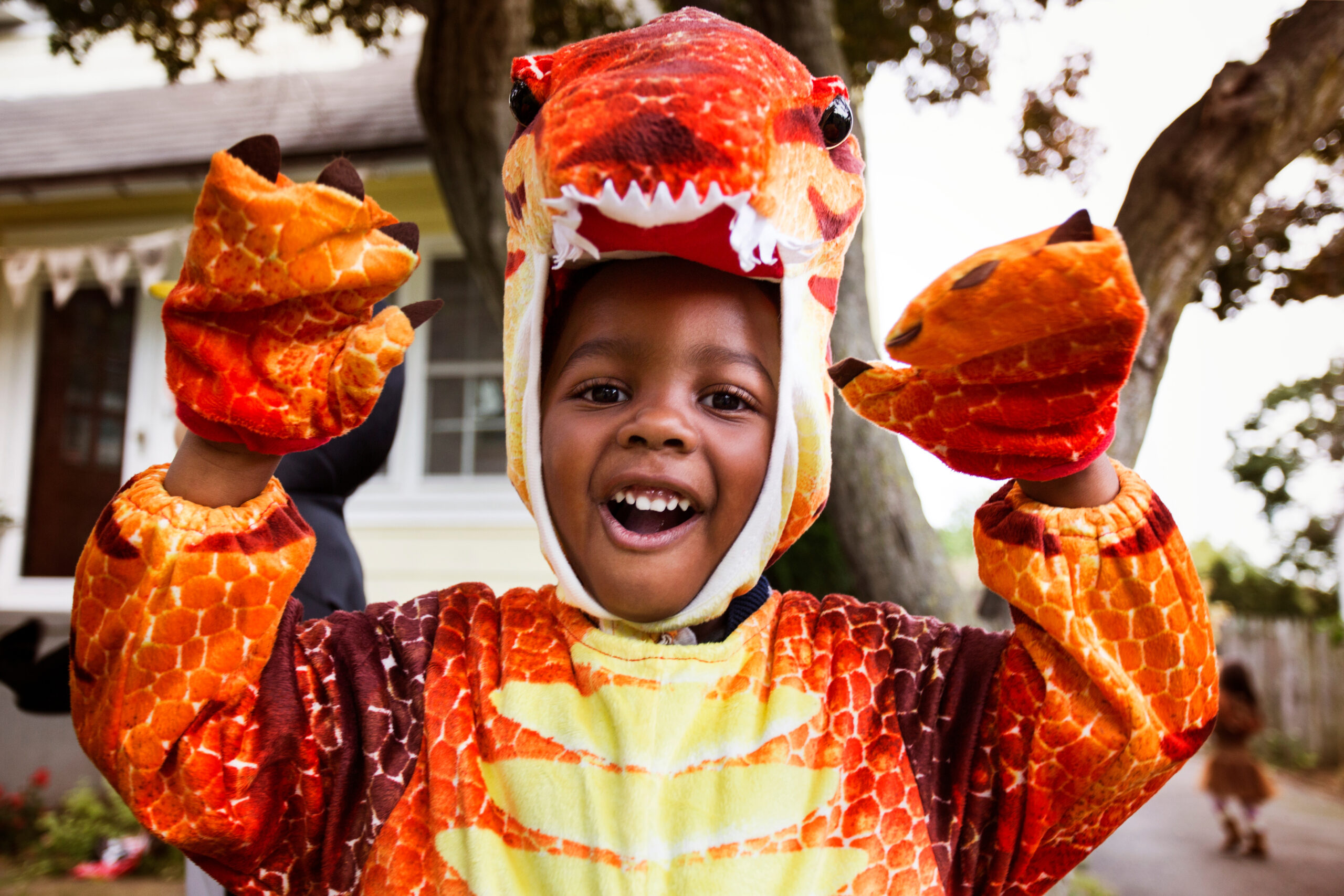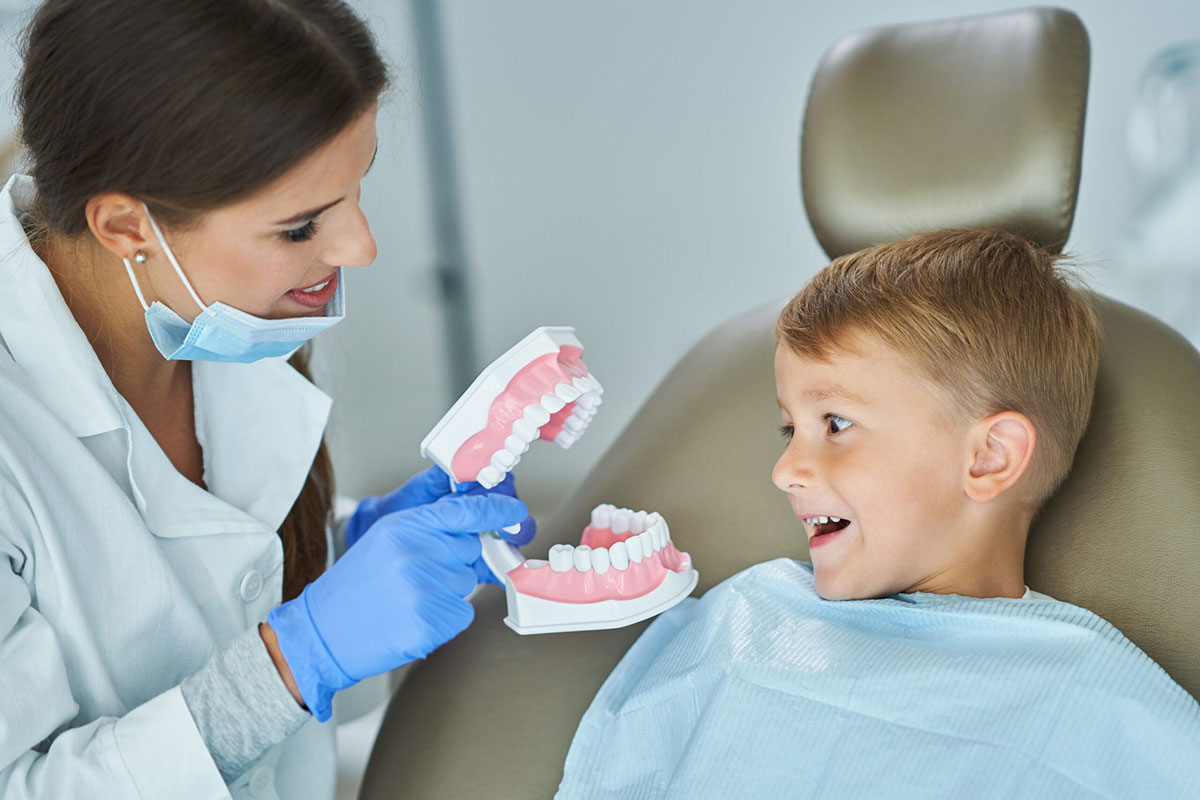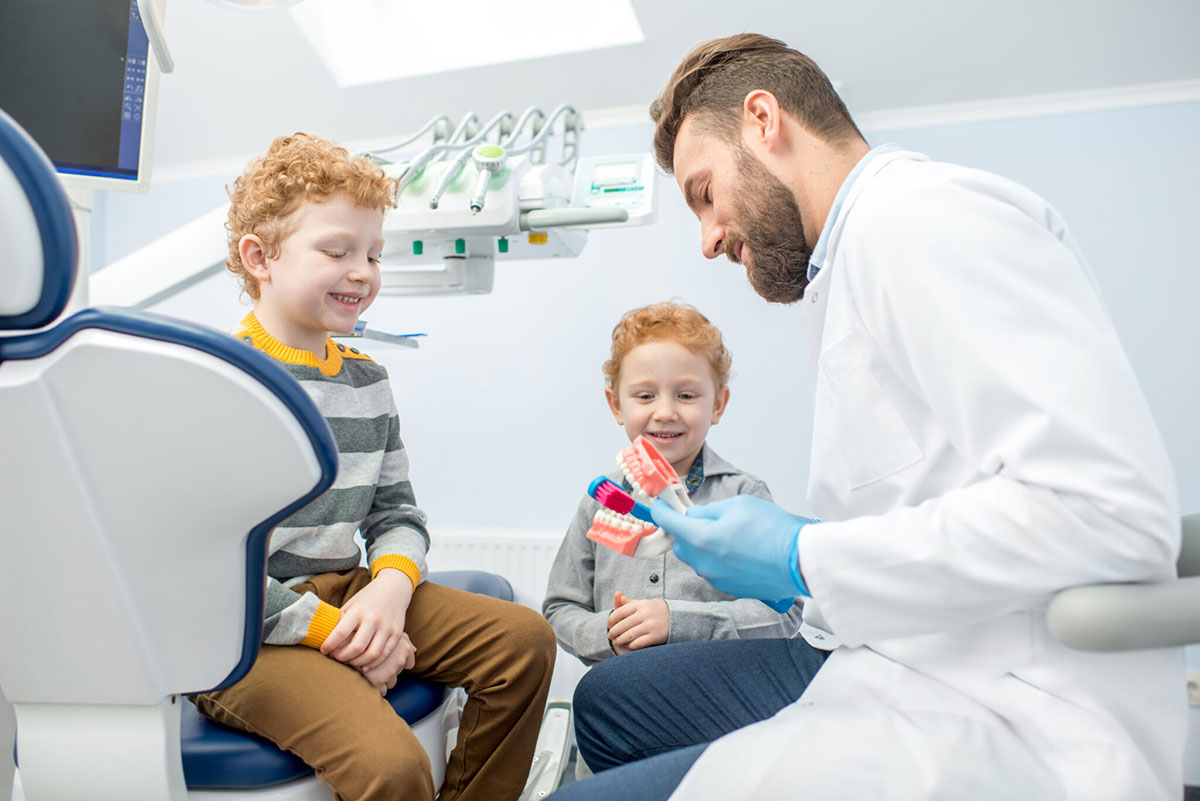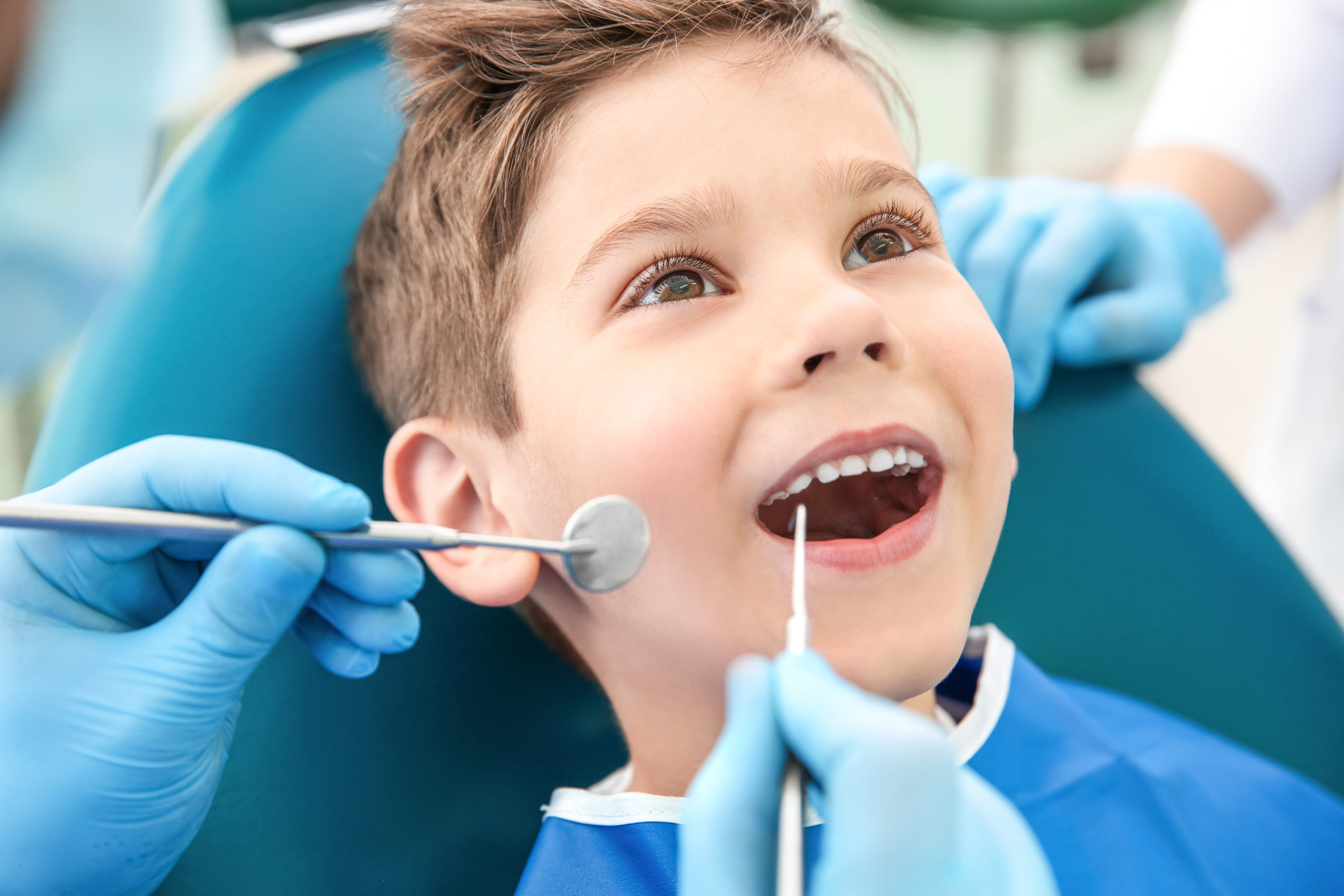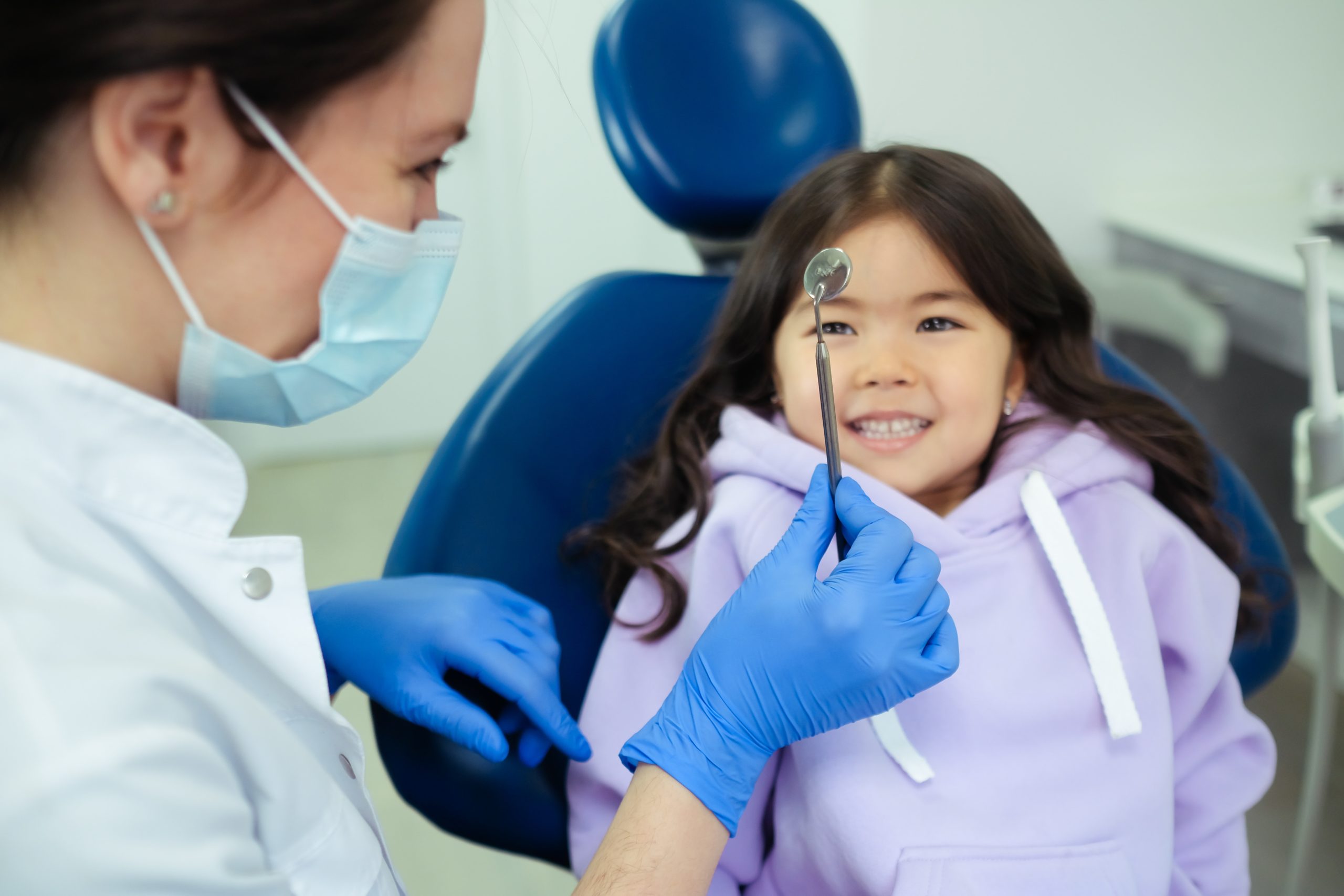 You’re at the dentist with your little one and the dentist shows you their x-rays. Typically, pediatric dentists like your Kids Mile High doctors will use x-rays to show you where decay may be present, if your child is congenitally missing teeth, or where impacted teeth may be hiding. It’s helpful to see those things on an x-ray since you can’t always see them with the naked eye.
You’re at the dentist with your little one and the dentist shows you their x-rays. Typically, pediatric dentists like your Kids Mile High doctors will use x-rays to show you where decay may be present, if your child is congenitally missing teeth, or where impacted teeth may be hiding. It’s helpful to see those things on an x-ray since you can’t always see them with the naked eye.
But have you ever wondered what exactly you’re looking at in terms of tooth anatomy? It’s fairly obvious on a dental x-ray that teeth have different layers and are differently shaped. But if you’ve ever wanted to know more, here’s a primer on everything you should know.
In this post, your Denver-area pediatric dentist will cover:
- Teeth 101: Parts of a tooth
- Tooth anatomy: what’s around your tooth
- The different types and names of teeth
- Baby teeth versus permanent teeth
Teeth 101: Parts of a tooth
Let’s start our tooth anatomy lesson with identifying the parts of a tooth. Every one of your child’s teeth — both their baby and permanent teeth — is composed of the same materials. And baby tooth anatomy and adult tooth anatomy are the same, too.
These are the parts of a tooth from the visible part moving into the gums. Every tooth has a:
- Crown: the part you can see above the gumline
- Neck: the part at the gumline between the crown and the root
- Root: the part you can’t see that sits inside your gums.
And from the outside layer in, here are the parts of a tooth and the function of each:
Enamel:
This is the outermost layer of your child’s tooth, the part you can see. Enamel is made up of hard, calcified tissue and protects the dentin of the teeth. It takes the burnt of biting and chewing forces, the wear and tear of eating.
Now, you might be surprised to learn that enamel only covers the visible part of every tooth — the crown. The outermost layer of each tooth that’s below the gumline and secured into the gums is called cementum (we’ll talk about that shortly).
Enamel is essentially white in color so if your kiddo’s teeth look a little yellow, this could be because you’re seeing through to their dentin. Fun fact: enamel on baby teeth is thinner than on adult teeth! So in certain lights, your child’s enamel can become a little transparent and you can actually see through it to the yellow dentin underneath.
And did you know? Enamel, just like hair, doesn’t contain any living cells. So it can’t repair on its own if damaged from tooth decay or wear. But a dentist like Dr. Paddy, Dr. Roger, or Dr. Meredith can treat your little one’s enamel to strengthen and protect it from further damage. Like with dental sealants.
Cementum:
This is the outermost layer in the anatomy of a tooth that you can’t see. It’s a hard, calcified connective tissue covering the tooth root below the gumline. As names of teeth go, this one’s easy to remember since “cementum” sounds a little like what it does — it attaches the tooth to the periodontal ligament of the gums. In other words, the cementum layer is the part of your child’s teeth that helps “cement” them to the gums.
Dentin:
If you were to look at a tooth anatomy diagram, the next layer in from enamel and cementum is dentin. It’s a bit softer than enamel and is made up of tiny, microscopic hollow tubules with fluid inside. This fluid has the all-important job of helping transmit senses to the nerves inside the pulp. So when your child eats a popsicle too fast and their teeth hurt, it’s dentin who delivers the news to the nerves… who then send the message to the brain saying, “Woah, that’s cold!”
Pulp:
The innermost part of a tooth is called the pulp. It’s the soft tissue at the center of a tooth and is made up of tissue, nerve endings, and blood vessels. Think of the pulp as a command center for each tooth: this part of the tooth is responsible for telling your brain when something you eat is too hot, too cold, or too sweet for your teeth. And very important, the pulp provides nourishment to keep your tooth healthy and alive.
And that’s it, the parts of a tooth and what they do: the enamel, cementum, dentin, and pulp. But wait a minute, what about where the teeth live? Let’s talk about that next.
Tooth anatomy: what’s around your tooth
It’s fairly common knowledge that your teeth sit in what’s called your gums. But that whole support system is much more complex than you might think!
Gums:
Gums are the soft tissue that cover and protect your child’s teeth roots. Cool fact about gums? They hold all your child’s baby teeth right from the beginning. Yes, all 20 of your little one’s primary teeth are hanging out inside the gums right from birth — fully formed and waiting to erupt at the right times. In fact, primary teeth start to form at five weeks’ gestation so they’re ready to go when your baby’s born!
The technical word for gums is “gingiva,” which might sound familiar if you’ve heard of “gingivitis.” The latter is a mild gum disease you definitely don’t want your child to get because it can be painful or cause bleeding. And you want to treat it right away so it doesn’t get worse. Since the gums sit between teeth and your child’s jawbone, severe gum disease can affect both teeth and bone, leading to bone loss, teeth getting loose, or even falling out.
Periodontal Ligaments:
Located inside the gums, periodontal ligaments are collagenous connective tissue fibers that connect your child’s tooth roots to their socket in the jawbone. If your child has orthodontic treatment in the future, periodontal ligaments are part of the teeth system that stretch, helping teeth shift while still keeping them securely in your gums as they move.
Alveolar bone:
This is the fancy name for the part of your jaw that surrounds all your teeth roots. It’s the part of your child’s jawbone that’s touching their teeth’s roots.

The different types and names of teeth
Now that you know all about tooth anatomy, how about the different types of teeth? For starters, our teeth come in different shapes and sizes, each corresponding to their function.
How many teeth does a child have? Your child’s primary teeth come as a set of 20 teeth, with the same set of 10 teeth in the upper and lower arches. Each of your little one’s jaws has:
- 4 incisors
- 2 canines
- 4 molars
Adult teeth are a bit different. In contrast to how many baby teeth you have, permanent teeth number at 32, with 16 teeth in each of the arches:
- 8 incisors
- 4 canines (cuspids)
- 8 premolars (bicuspids)
- 12 molars (including 4 wisdom teeth)
Incisors:
Located at the front of the mouth, incisors are shaped like small chisels, with sharp edges to help you bite into food and separate it. You typically use your incisors when you want to bite off a small, manageable piece from something large like an apple, sandwich, or piece of pizza.
For kids, incisors are the first teeth to erupt. They’re your child’s cute first teeth that you ooh and aahh over, appearing when your baby is about 6 months old. And no doubt, they’re your introduction to the world of teething! Later on when your kiddo is about 6 to 8 years old, you can expect their primary incisors to fall out and their adult ones to appear.
Canine teeth:
As far as names of teeth go, this one’s pretty descriptive of their look and position in the mouth. Reminiscent of Fido’s fang-like teeth, our canine teeth sit next to our incisors on either side — two canines on each of the top and bottom arches. They’re sharp and pointy, meant for tearing food.
Baby canines come in when your little one is around 16-20 months, starting with the upper ones. Adult canines erupt in the opposite order: the lower ones come in first around age nine, then the upper ones by the time your child is 11 or 12.
Premolars:
Now this is where we start to have different numbers of teeth between primary teeth and permanent teeth. Baby teeth don’t technically include premolars, only molars. Adult teeth include two pairs of premolars that sit beside the canine teeth on the upper and lower arches, for a total of eight premolars. They erupt when your child is about 10 years old. Premolars are bigger and squarer than canines and incisors with a flat, ridged surface for crushing and grinding your food so you can swallow it.
Molars:
The back of your mouth holds your molars. And when it comes to types of teeth, we can safely say molars are the biggest and strongest of all your teeth. Molars, like premolars, are shaped for crushing and grinding food into pieces that are easier to swallow.
Baby teeth consist of 8 molars, while adult teeth have 12. What’s unique about adult molars is that the last four that should sit at the very back of the mouth take a long time to fully erupt. Called “wisdom teeth,” they show up between 17-25 years old, when you’re “older and wiser.”
But sometimes they don’t come in at all. If your dental arches don’t have room for them, your wisdom teeth are likely impacted, meaning your erupted teeth are blocking their path. Oftentimes, your dentist will remove your wisdom teeth if they’re stuck in your gums.
Baby teeth versus permanent teeth
We’ve covered the main differences between baby teeth and permanent teeth pretty well. But let’s recap three biggies:
- Baby teeth eventually fall out, adult teeth are permanent.
- How many baby teeth? There’s 20. Permanent teeth: 32.
- We only have premolars with our adult teeth, not with our baby teeth.
Bottom Line:
We say teeth are pretty amazing and a super important part of our bodies. And knowing more about them can inspire you to take better care of them — whether your little one’s baby teeth, or the adult teeth that will soon take their place.
If you’re looking for even more information about your kids’ teeth or have specific questions about their teeth, your Denver-area pediatric dentists are here to help.
Contact us today for an appointment at our Englewood, Thornton, or Central Park, CO office.





